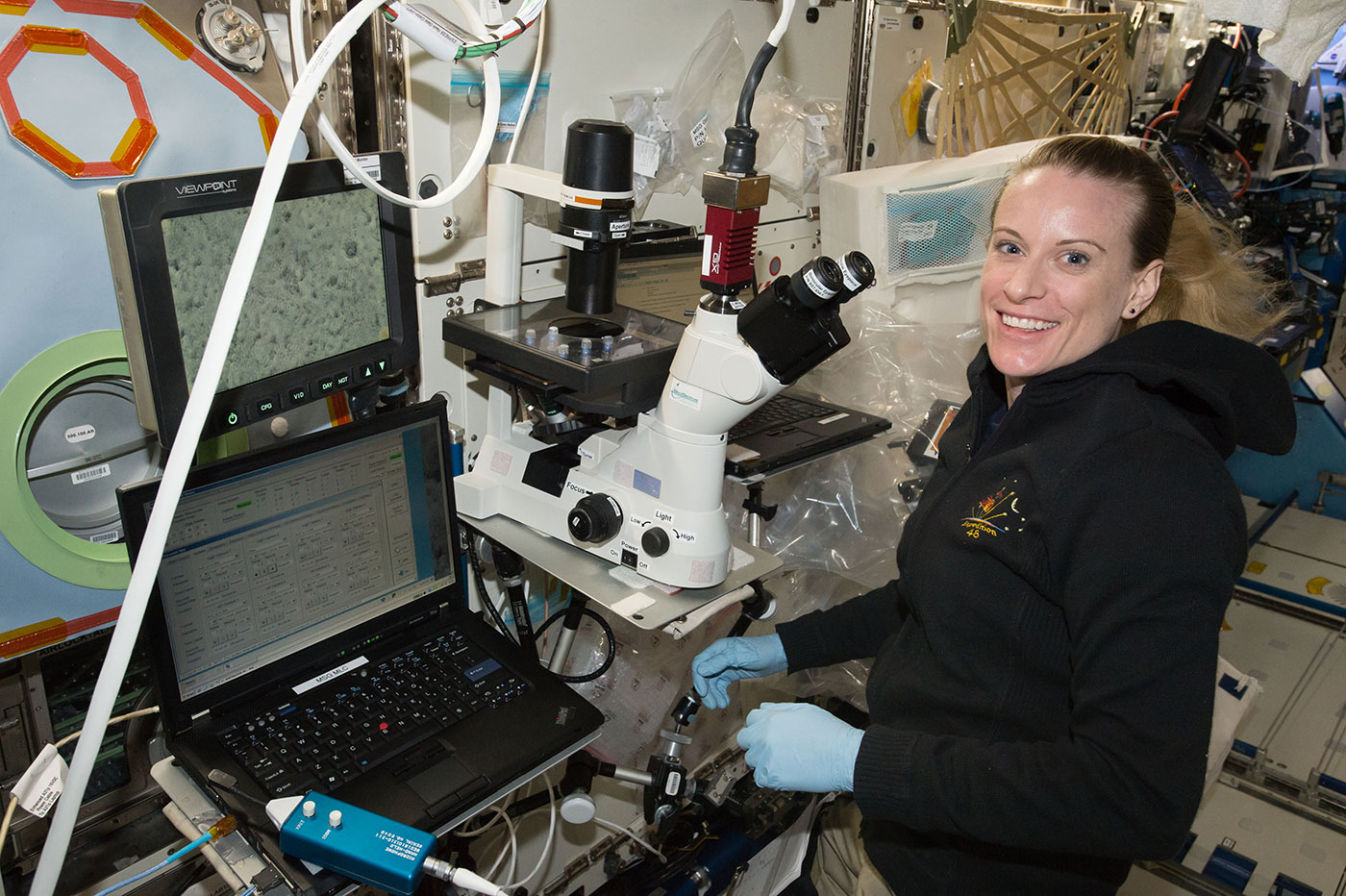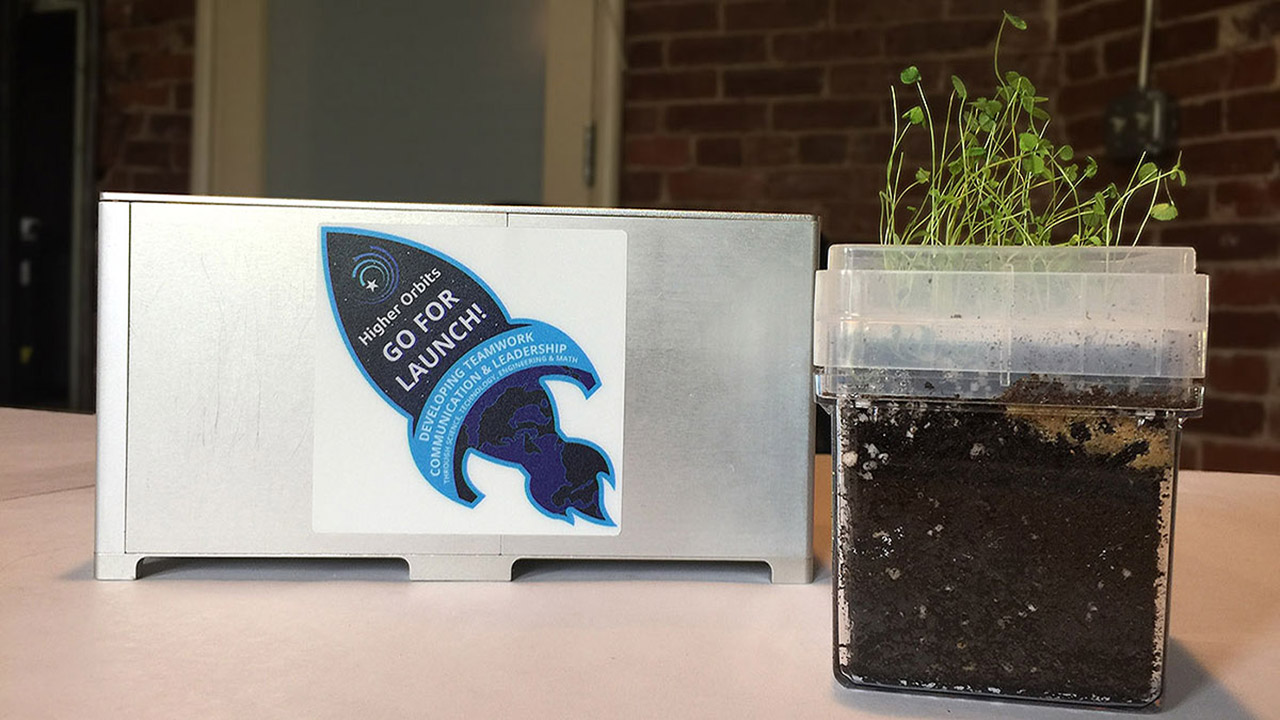Arun Sharma, a postdoctoral research fellow at the Harvard Medical School Department of Genetics, is using the International Space Station (ISS) National Lab to study heart cells derived from human induced pluripotent stem cells (iPSCs). In practical terms, Sharma’s investigation, which launched to the ISS on SpaceX CRS-9, is focused on growing human heart cells “in a dish” and studying the effects of microgravity on the cells. Such research could benefit heart patients on Earth as well as astronauts on future long-duration spaceflight missions.

Arun Sharma speaking at the SpaceX CRS-9 NASA science briefing.
Media Credit: Image courtesy of Arun Sharma
We recently asked Sharma his thoughts on studying heart cells in space.
We’re focused specifically on the heart and cardiovascular system.
In particular, these human iPSCs represent a powerful new model system that enables us to study heart function on the cellular level.
You can make iPSCs from blood and skin cells.
It’s a simple process that takes about one month, and these iPSCs can become whatever kind of cell you want them to be within a matter of weeks. You can turn them into heart cells, nerve cells—whatever you’re interested in studying.
We’re interested in using stem cell-derived heart cells to study the effects of microgravity on heart function.
We’re doing a variety of analyses to see how the heart cells beat differently or how their DNA changes due to microgravity. We know from long-term astronaut studies that there’s muscle loss in the heart and other muscles of the body. The muscles diminish through a process called muscle atrophy. Since the heart is a muscle, this atrophy also happens to the heart to some extent. But, a big unanswered question is—what happens at the cellular level due to microgravity? And then, how can we use this new understanding to help cardiac patients here on Earth?
I think within our lifetimes we’ll develop exciting new ways of treating heart disease or maybe even solve it entirely.
Perhaps you could just replace a failing heart by growing a whole new heart in a dish. I think this possibility is closer than it seems, and within a few decades we’ll have a better answer.
Ultimately, we’d like to grow a heart in a dish, but we’re not at that point today.
Specifically, for this microgravity project, we didn’t have a good cell-based model system to study the effects of microgravity on heart function, so we created one with millions of cells on a single sheet about the size of a quarter.
From the start, I’ve always had a passion for space science.
I grew up in Huntsville, Alabama, where the aerospace industry has a huge influence. I was at the launch of my project to the ISS, which was definitely the most exciting thing that I’ve ever been a part of in my professional life as scientist!
Arun Sharma, NASA Astronaut Kate Rubins, and Sarah Wallace of NASA's Johnson Space Center speak with CNN Correspondent Rachel Crane at the 2017 International Space Station Research and Development Conference.
Humanity is going to spend more time in space as we travel deeper into the solar system.
In the broadest sense, we want to better understand how the human body is going to respond to this environment because we’ll inevitably spend more time in microgravity as we travel to Mars and beyond.
I was very fortunate to be raised in a family where science is important.
My dad is a professor of physics at Alabama A&M University in Huntsville. He was my main influence to become a scientist in the first place.
Do I have an interest in going to space? Sign me up!
Absolutely! As a kid from Huntsville, that’s the dream.
My passion for cardiovascular research started because I wanted to better understand how we could repair the heart after an event like a heart attack.
Many of us have family members with cardiovascular issues. I wanted to better understand how heart disease happens and find new ways to treat it.
The cool thing about our iPSC-derived heart cells is that they have the same genetic material that the donor person has.
So we can see how our experiments will affect real-life situations. For example, if a person has a heart rhythm abnormality, we can reproduce and study that same rhythm problem in a dish by making that individual’s iPSC-derived heart cells.

NASA Astronaut Kate Rubins works to set up a new microscope onboard the space station for the Effects of Microgravity on Stem Cell-Derived Heart Cells investigation.
Media Credit: Image courtesy of NASA TV
Everyone involved with the ISS and the ISS National Lab is so passionate about what they do.
That’s the first thing that became very clear to me. They are very passionate about their role in making the ISS National Lab accessible to scientists like me doing research. A few years ago, I had no idea that it would be possible to send a research project to the space station. The team at the ISS National Lab helped make our study a reality, and I’m forever grateful for their expertise.
I was a Ph.D. graduate student at Stanford University working with Dr. Joseph Wu at the Stanford Cardiovascular Institute when we started on this project.
We still have a team of grad students in California who we consult with on a regular basis for some of the analysis that we are performing on these space-flown heart cell samples.
It’s fun to talk with other researchers conducting studies onboard the ISS.
We get a chance to say, “Hey, you’re working on something similar—maybe we can talk about those things and exchange notes.” It’s exciting to know that other people around the country are as passionate about the intersection of space science and biology as I am.
If I had a dream to be something else, it would be to be an astronaut, or maybe a teacher, since I love to teach students.
That’s a big reason as to why I hope to become a professor one day. It’s so rewarding to mentor students and watch them grow.
I don’t ever want to stop learning—that’s the key to success in my opinion.
Right now, I’m trying to learn as much as I can about human genetics and about some new technologies, such as CRISPR, being pioneered here in Boston. CRISPR is a technology that allows us to modify DNA and the genome very easily, and it could be a way to treat or eventually cure some human diseases in the future. Another application of CRISPR is to make customized cells and organisms. The applications of this technology seem limitless, and it’s definitely a very exciting time to be involved in biomedical research.













